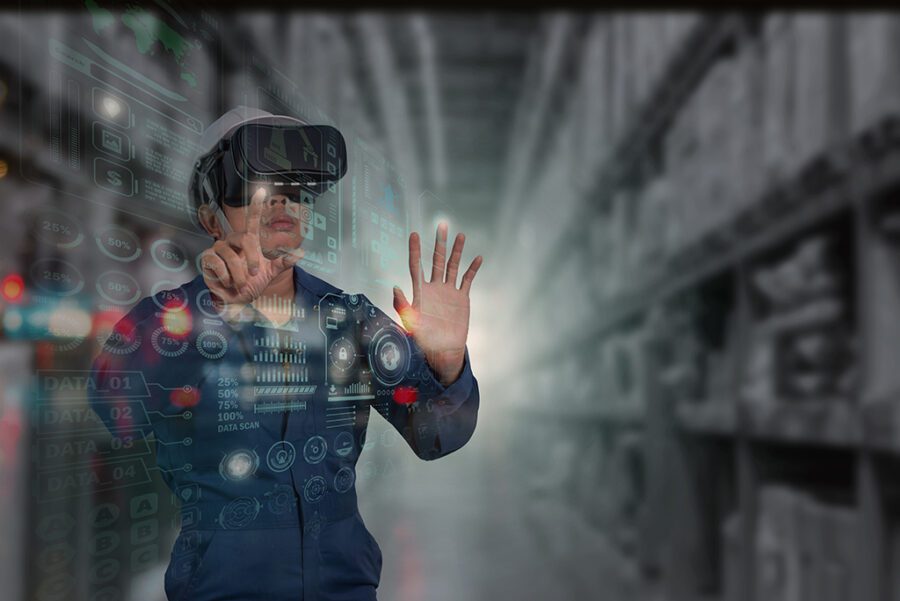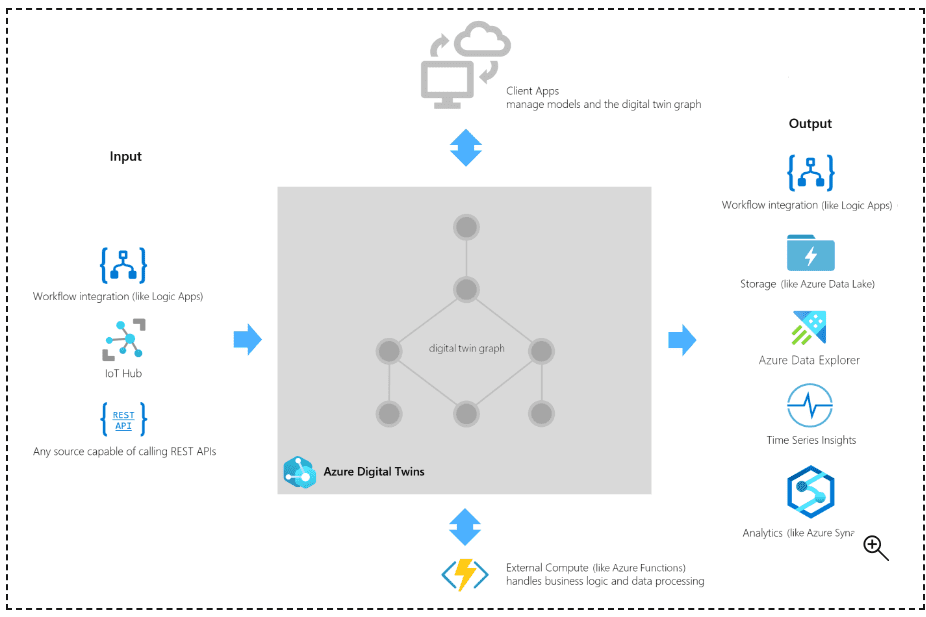
Introduction
In this post, I discussed the architecture of digital twins. This is a relatively new and emerging topic, and here I will look at Azure Digital Twins as an example to examine this architecture in depth. The architecture described below is from a cloud perspective
It is created by integrating other existing cloud products
I expect that all providers will adopt this strategy of integration, as illustrated below:

Architecture
The steps are
- Model any environment, and bring digital twins to life in a scalable and secure manner
- Connect assets such as IoT devices and existing business systems, using a robust event system to build dynamic business logic and data processing
- Query the live execution environment to extract real-time insights from your twin graph
- Build connected 3D visualizations of your environment that display business logic and twin data in context
- Query historized environment data and integrate with other Azure data, analytics, and AI services to better track the past and predict the future
Source: Azure Digital Twins overview
Then, model the twins and determine the relationships between twins through twin graphs.:
You can create and query relationships through the twin graph. Integration with other services is through event routes. Event routes are an example of an event-driven architecture. To send digital twin data to other Azure services or ultimately outside of Azure, you can create event routes
For example
- Connect Azure Digital Twins to Time Series Insights to track time series history of each twin
- Store Azure Digital Twins data in Azure Data Lake
- Analyze Azure Digital Twins data with Azure Synapse Analytics or other Microsoft data analytics tools
- Integrate larger workflows with Logic Apps
- Send data to custom applications for flexible and customized actions
Analysis
While the above is comprehensive, in my view, it is one pipeline for creating the digital twin ie a design pipeline (the other two being the simulation pipeline and the deployment pipeline)
The actual deployment would include two additional critical parts – the feedback loop and the integration
In that sense, the overall architecture of a digital twin can be seen as three parts
- Design pipeline
- simulation pipeline and
- deployment pipeline
In terms of the design patterns, there are three possibilities
- Time series
- Event-driven
- Graph
We have described the event-driven architecture above
But in reality, data may be acquired as a time series or as a graph
Note that by graphs, I mean programming constructs that operate directly on a graph structure comprising edges and nodes ex a graph neural network.
An example of a Graph driven digital twin is A Graph Neural Network-Based Digital Twin for Network Slicing Management.
Image source – Microsoft
